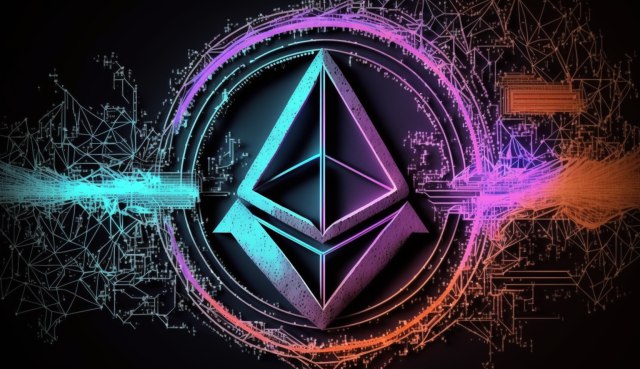Since its inception, the Ethereum platform has undergone numerous enhancements. This guide centers around Ethereum’s seventeenth modification, named the Shanghai Upgrade.
The Ethereum network operates without a central governing body, exhibiting inherent decentralization and resilience. However, the Decentralized Autonomous Organization (DAO) facilitates examining and adapting specific inflexible rules, bolstering the network’s usability and effectiveness. The DAO actualizes these modifications through a mechanism referred to as “forking.”
Bitcoin (BTC) and Ethereum (ETH), the top-ranking duo of cryptocurrency networks, have undergone a series of fork occurrences. These forks can be harmonious (soft) or incompatible (hard) with the previous network version. Often, these forks are adopted to address issues the network’s community raises. Many of these forks have amplified the scalability and approachability of elite blockchain networks.

CypherMindHQ.com Artificial Intelligence Crypto Trading System - Surpass the competition with this cutting-edge AI system! Utilize the prowess of innovative algorithms and amplify your crypto trading strategies with CypherMindHQ. Learn more today!
Forking to upgrade blockchain networks originated with the Bitcoin network in 2014. Introduced by Mike Hearn, this upgrade, named Bitcoin XT, boosted Bitcoin’s transaction speed from 7 to 24 transactions per second.
The Ethereum platform has likewise undergone a series of upgrades since its debut. This guide focuses on the seventeenth such modification, the Shanghai Upgrade for Ethereum.
What Is Ethereum’s Shanghai Upgrade?
Dubbed Shapella, the Shanghai upgrade emerged as a hard fork enhancement to the Ethereum network in April 2023. The pivotal update is engineered to grant users access to their staked Ether, removing the constraint of indefinite lock-ups. Post-upgrade, Ethereum participants can stake tokens, carry out transaction validations, and claim rewards from minted tokens. Since its inception in 2015, Ethereum has made consistent strides toward augmenting its network, executing more than a dozen forks.
Ethereum, akin to Bitcoin, made its entry into the scene utilizing a proof-of-work (PoW) validation method. However, the wheels began to turn in December 2020, as Ethereum started testing the waters of the proof-of-stake (PoS) validation approach by introducing a soft fork named Beacon Chain. The Beacon Chain streamlined the transition of Ethereum users towards a PoS system, successfully reaching a goal of 524,288 ETH just days before its launch.
Decoding the Mysteries of the Shanghai Upgrade
The Shanghai overhaul of Ethereum represents a series of enhancements to the network, each contributing to solving a distinct network issue. The Shanghai refresh includes five Ethereum Improvement Proposals (EIPs): EIP-4895, EIP-3651, EIP-3855, EIP-3860, and EIP-6049.
Before the Shanghai upgrade was “The Merge,” which shifted Ethereum from a proof-of-work system to a proof-of-stake model via the Beacon Chain in September 2022. Beacon Chain validators were required to deposit 32 ETH to aid in securing the new PoS system. At Merge’s time, there was no mechanism for reclaiming staked ETH or realized profits. The most significant aspect of the Shanghai upgrade is EIP-4895, which allows validators to withdraw their staked funds. The remaining EIPs focus on reducing gas fees via varying methods.

CypherMindHQ.com Artificial Intelligence Crypto Trading System - Outpace the competition with this high-end AI system! Leverage the capabilities of progressive algorithms and enhance your crypto trading performance with CypherMindHQ. Learn more today!
Despite EIP-4895, the total amount of staked ETH is roughly 16 million. Beacon Chain offers two withdrawal methods: partial and complete (unstaking). Validators can opt for a partial withdrawal to reclaim funds exceeding the staked 32 ETH (exclusively staking rewards). In contrast, the withdrawal permits validators to retrieve their staked ETH and staking rewards.
Coinciding with the Shanghai Upgrade, another enhancement named Capella was introduced. These two upgrades together are often referred to as Shapella. While Shanghai refines the transaction execution layer, Capella focuses on improving the consensus, where nodes operate the PoS Beacon Chain.
Key Characteristics of the Ethereum Shanghai Upgrade
The Shanghai upgrade, an intricate ensemble of five unique Ethereum Improvement Proposals (EIPs) – EIP-4895, EIP-3651, EIP-3855, EIP-3860, and EIP-6049, serves as a crucial milestone for Ethereum. There was an original plan for Ethereum’s developers to incorporate EIP-4844 in this release, which would bring “proto-sharding,” a technique that enhances transaction speed across various platforms. This implementation, however, has been postponed until 2024.
The Shanghai upgrade, released in April 2023, entails the following notable EIPs:
- EIP-4895 is highly significant as it allows validators to withdraw their staked ETH, initially locked when they contributed 32 ETH to support the new Ethereum structure.
- EIP-3651 offers lower gas costs to validators while they access their “COINBASE” address for executing Maximal Extractable Value (MEV) payment. (Note: This COINBASE is a tool validators use, unrelated to the widely-known cryptocurrency exchange).
- EIP-3855 introduces a new feature, “Push0,” to decrease developer expenses.
- EIP-3860 minimizes gas costs for developers utilizing “init code,” a specific type of code for smart contracts.
- EIP-6049 alerts developers if a code “SELFDESTRUCT” depreciates, further helping to reduce gas fees.
The Ethereum network also underwent several other upgrades, namely Tangerine Whistle (2016), Spurious Dragon (2016), Constantinople (2019), Istanbul (2019), Muir Glacier (2020), and Beacon Chain (2020). The lineup of remaining Ethereum upgrades includes the Beacon Chain Upgrades – Altair (2021) and Bellatrix (2022), Berlin (2021), Arrow Glacier (2021), and Gray Glacier (2022).
Conclusion
Even though the Shanghai enhancement doesn’t match the Merge’s magnitude, it is a vital accompaniment to Ethereum’s transition from PoW to PoS. This noteworthy upgrade has notably alleviated the excessive gas costs on the Ethereum network, providing validators with the liberty to unstake or withdraw a portion of their staked funds. The trajectory of future forks seems boundless, signaling a continuous journey of enhancements that will adorn the fertile grounds of the Ethereum network.



